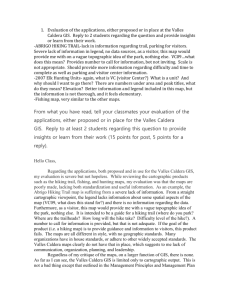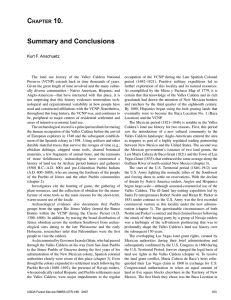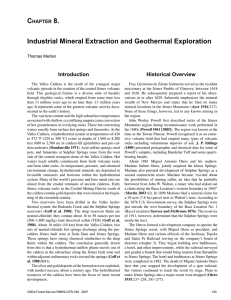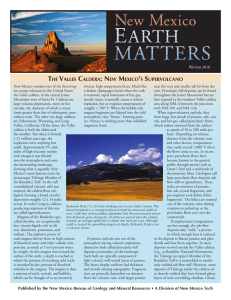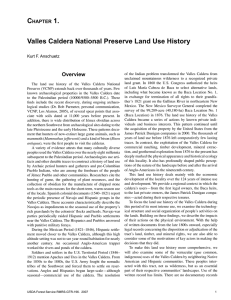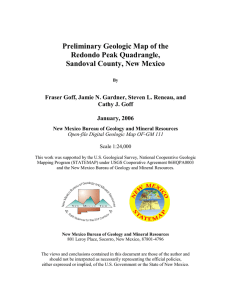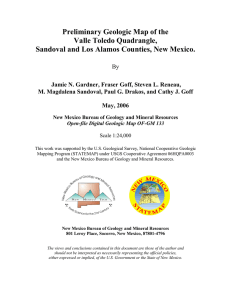UA Awarded $4.35M to Study
advertisement
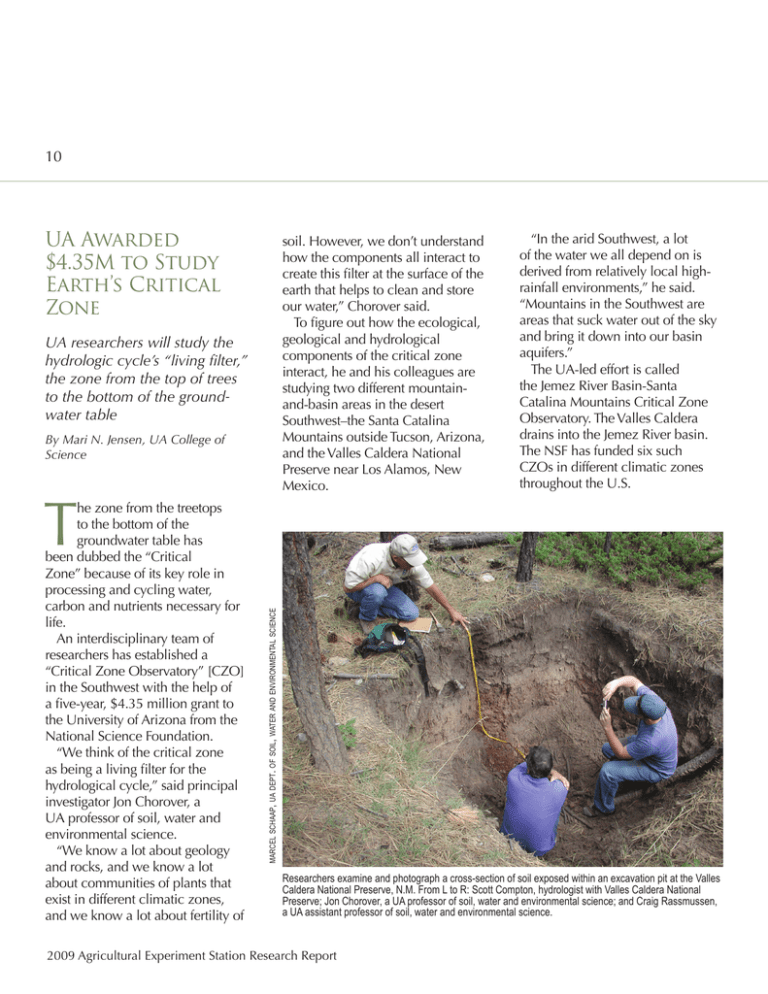
10 UA Awarded $4.35M to Study Earth’s Critical Zone soil. However, we don’t understand how the components all interact to create this filter at the surface of the earth that helps to clean and store our water,” Chorover said. To figure out how the ecological, geological and hydrological components of the critical zone interact, he and his colleagues are studying two different mountainand-basin areas in the desert Southwest–the Santa Catalina Mountains outside Tucson, Arizona, and the Valles Caldera National Preserve near Los Alamos, New Mexico. UA researchers will study the hydrologic cycle’s “living filter,” the zone from the top of trees to the bottom of the groundwater table By Mari N. Jensen, UA College of Science marcel schaap, ua dept. of soil, water and environmental science T he zone from the treetops to the bottom of the groundwater table has been dubbed the “Critical Zone” because of its key role in processing and cycling water, carbon and nutrients necessary for life. An interdisciplinary team of researchers has established a “Critical Zone Observatory” [CZO] in the Southwest with the help of a five-year, $4.35 million grant to the University of Arizona from the National Science Foundation. “We think of the critical zone as being a living filter for the hydrological cycle,” said principal investigator Jon Chorover, a UA professor of soil, water and environmental science. “We know a lot about geology and rocks, and we know a lot about communities of plants that exist in different climatic zones, and we know a lot about fertility of “In the arid Southwest, a lot of the water we all depend on is derived from relatively local highrainfall environments,” he said. “Mountains in the Southwest are areas that suck water out of the sky and bring it down into our basin aquifers.” The UA-led effort is called the Jemez River Basin-Santa Catalina Mountains Critical Zone Observatory. The Valles Caldera drains into the Jemez River basin. The NSF has funded six such CZOs in different climatic zones throughout the U.S. Researchers examine and photograph a cross-section of soil exposed within an excavation pit at the Valles Caldera National Preserve, N.M. From L to R: Scott Compton, hydrologist with Valles Caldera National Preserve; Jon Chorover, a UA professor of soil, water and environmental science; and Craig Rassmussen, a UA assistant professor of soil, water and environmental science. 2009 Agricultural Experiment Station Research Report 11 Comparing the same processes in different climates will help scientists figure out how the critical zone’s properties will change under climate change, said co-principal investigator Peter Troch, a UA professor of hydrology and water resources. The scientists have begun research at the Valles Caldera and in Marshall Gulch at the top of the Santa Catalinas. By monitoring water in the soil, stream water and rainwater in the Catalinas, the team has found that even within a relatively small area, the bedrock geology affects water in the soil enough to dictate what vegetation grows there. The UA’s Sustainability of Semi-Arid Hydrology and Riparian Areas (SAHRA) program provided a Technology and Research Initiative Fund seed grant for the pilot project. Troch said the research at the Valles Caldera will build upon previous studies of snowpack and the hydrologic cycle conducted there as part of the UA’s Sustainability of Semi-Arid Hydrology and Riparian Areas (SAHRA) program. Robert Parmenter, Valles Caldera’s Director of Science and Education, said, “This large NSF CZO grant provides yet another example of the scientific value of the Valles Caldera as an outdoor laboratory and classroom. “The scientists and students who will work here from across the country, along with their arrays of high-tech instrumentation, will provide benefits to society at local, regional and national scales— particularly through educational programs for public school students and teachers, as well as university undergraduates, graduate students and faculty.” In addition, findings from CZO research will complement those from the new experiment at the UA’s Biosphere 2. A team of scientists, including some from the CZO team, are using Biosphere 2 as a gigantic controlledenvironment laboratory to test how water moves through a variety of artificial hill slopes. Chorover said, “A lot of exciting science occurs at the interface between disciplines.” He added that having a research team that combines the outlooks and skills of hydrologists, ecologists, geomorphologists and geochemists is crucial for figuring out how the critical zone works. Karl W. Flessa, director of UA’s new School of Earth and Environmental Sciences, said the CZO project capitalizes on the school’s strengths. “It’s a bold and imaginative effort,” Flessa wrote in an e-mail. “This project is a great example of how the new School can bring together a great interdisciplinary team to tackle important problems in the earth and environmental sciences.” CALS’ department of soil, water and environmental sciences is one of the five UA departments that make up the new School. The other departments are atmospheric sciences, geosciences, hydrology and water resources and the laboratory of tree-ring research. Chorover, a member of the new school, said, “We would be hard-pressed to find another university in the entire country that has the human resources to do truly integrated Critical Zone Observatory science at the scale that we’re going to do it.” Additional co-principal investigators on the grant, all from the UA, are: Paul Brooks, associate professor of hydrology and water resources; Jon Pelletier, associate professor of geosciences; Craig Rasmussen, assistant professor of soil, water and environmental science; David Breshears, natural resources professor; Travis Huxman, Biosphere 2 director and an associate professor of ecology and evolutionary biology; Kathleen Lohse, assistant professor of natural resources; Shirley Kurc, assistant professor of natural resources; Jennifer McIntosh, assistant professor of hydrology and water resources; Thomas Meixner, associate professor of hydrology and water resources; and Marcel Schaap, assistant professor of environmental physics. Contact Jon Chorover (520) 626-5635 chorover@cals.arizona.edu The University of Arizona – College of Agriculture and Life Sciences
